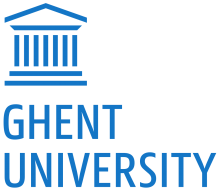We've updated publication list on our website, and reached a milestone! Feel curious to dive into more than 50 publications investigating Gallium Nitride power devices!
Ghent University

UGhent is one of Belgium’s leading institutions of higher education and research. Established in 1817, it now hosts 41000 students and 9000 staff members spread over 11 faculties. Ghent University prides itself on being a knowledge hub which is not only forward-thinking but also self-questioning and authentic. Collaborative research, a dynamic work environment and a pioneering attitude are at the heart of research policy. Ghent University has about 20 business development centres in different disciplines all working on applied research and technology transfer. There are powerful partnerships with renowned research centres as IMEC and VIB, as well as partners in industry. The University has participated in 260 projects in the Seventh Framework Programme, of which 28 ERC grants and 25 Marie Curie Fellowships. Ghent University coordinated 42 collaborative projects in FP7. The university is one of the fastest growing European universities in terms of research capacity and productivity. It now occupies the 85th position in the Times Higher Education World University Ranking. The research group COCOON (Coating and Coating of Nanostructures) is part of the Department of Solid State Sciences at Ghent University. The group is involved in thin film materials research, with a focus on
- In-situ characterization – the group has designed dedicated setups for the characterization of thin films during deposition/annealing treatments. We have developed several home built systems for in situ XRD during annealing under various environments (oxidizing, inert, reducing atmosphere, and a dedicated system for annealing in Se vapor) offer opportunities for efficiently studying the evolution of phase, grain size and phenomena such as crystallization and phase transformations during annealing. Other characterization tools allow in situ probing of the thin-film sheet resistance by a four-point probe set-up in situ monitoring of optical constants by spectroscopic ellipsometry, by which the latter can be used for modelling the thin film stacks’ roughness and thicknesses during annealing.
- Combinatorial thin film research – Two dedicated setups were developed for the deposition of combinatorial libraries. 150mm sized substrates can be coated with a film that has a uniform thickness and a linear gradient in composition, resulting in a "printed" compositional library of binary, ternary or even quaternary mixtures. In this way, one can easily investigate the properties of >100 different compositions in parallel, all of which are deposited onto the same carrier during a single deposition run. After deposition, the libraries can be annealed in a rapid thermal processing system. Local characterization of the material properties as a function of (com)position within the combinatorial library can be achieved by spectroscopic ellipsometry (layer thickness, optical properties), UV-Vis (optical transmission), XRD (crystallinity), XRF (composition) and IV/CV measurements (electrical properties). Recently, a patent application was submitted to protect the IP that is involved in the deposition of combinatorial thin film libraries.
- Atomic layer deposition for conformal coating – the group has designed and constructed nine R&D systems for ALD. Because of the custom-made design, the reactors are very flexible and offer the opportunity for fundamental studies of ALD processes through e.g. in situ ellipsometry, mass spectrometry and infrared spectroscopy. A portfolio of ALD processes was developed for deposition of metals (Pt, Ru), nitrides (TiN, VN) and oxides (incl. TiO2, Al2O3, ZnO, ZrO2, HfO2, Fe2O3, In2O3, Ga2O3, VOx, MnOx, CoOx, NiO and MgO). Over the past decade, the group has established itself within the international ALD community, as evidenced by several invited talks and tutorial lectures at conferences, and synchrotron based approaches to in situ characterization during ALD processes.


